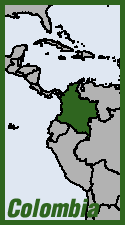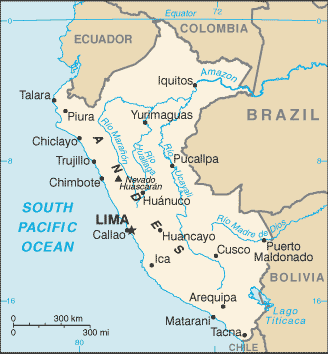 Colombia's President Juan Manuel Santos on July 18 announced details of an operation to seize nearly 278,000 hectares said to have been illegally usurped by the FARC in Meta region, on the eastern plains. "Operation Yari" was led by the military's elite Task Force Omega, although it was not clear if any actual combat was involved. Santos said the lands were a mixture of private predios (collective peasant holdings) and "vacant" state lands. While Santos named the FARC's East and Southern fronts as controlling the lands, there was some ambiguity as to how they had been usurped. He said: "These lands had been acquired illegally, because the titles were not legal or because they were occupations of vacant lands" that pertain to the state. He said the former predios would be turned over to the government's Banco de Tierras for redistribution to expropriated campesinos, as mandated by the terms of the peace process now underay. He said the lands were used by the FARC both for cattle ranching and processing cocaine. Many of the lands were in La Macarena, an area the government has especially targeted for coca eradication. (MiRegión, La Macarena, El Espectador, Bogotá, Radio Caracol, Reuters, July 17)
Colombia's President Juan Manuel Santos on July 18 announced details of an operation to seize nearly 278,000 hectares said to have been illegally usurped by the FARC in Meta region, on the eastern plains. "Operation Yari" was led by the military's elite Task Force Omega, although it was not clear if any actual combat was involved. Santos said the lands were a mixture of private predios (collective peasant holdings) and "vacant" state lands. While Santos named the FARC's East and Southern fronts as controlling the lands, there was some ambiguity as to how they had been usurped. He said: "These lands had been acquired illegally, because the titles were not legal or because they were occupations of vacant lands" that pertain to the state. He said the former predios would be turned over to the government's Banco de Tierras for redistribution to expropriated campesinos, as mandated by the terms of the peace process now underay. He said the lands were used by the FARC both for cattle ranching and processing cocaine. Many of the lands were in La Macarena, an area the government has especially targeted for coca eradication. (MiRegión, La Macarena, El Espectador, Bogotá, Radio Caracol, Reuters, July 17)

 Peru's authorities can't seem to put out the last flicker of the Sendero Luminoso insurgency. A generation ago, the Maoist guerillas seemed capable of toppling the government but are now largely confined to a remote pocket of jungle known as the Apurímac-Ene-Mantaro River Valley (VRAEM). But that happens to be a top coca cultivation zone, affording the insurgency access to funds. Now, authorities claim to have uncovered evidence that the neo-Senderistas are in league with one of the re-organized Colombian cocaine cartels, ironically known as the "Cafeteros" (coffee-producers). "For the first time in an objective and concrete manner, the state can corroborate the link between drug trafficking and terrorism in the VRAEM," Ayacucho regional anti-drug prosecutor
Peru's authorities can't seem to put out the last flicker of the Sendero Luminoso insurgency. A generation ago, the Maoist guerillas seemed capable of toppling the government but are now largely confined to a remote pocket of jungle known as the Apurímac-Ene-Mantaro River Valley (VRAEM). But that happens to be a top coca cultivation zone, affording the insurgency access to funds. Now, authorities claim to have uncovered evidence that the neo-Senderistas are in league with one of the re-organized Colombian cocaine cartels, ironically known as the "Cafeteros" (coffee-producers). "For the first time in an objective and concrete manner, the state can corroborate the link between drug trafficking and terrorism in the VRAEM," Ayacucho regional anti-drug prosecutor 





Recent comments
3 weeks 1 day ago
7 weeks 2 hours ago
11 weeks 7 hours ago
11 weeks 5 days ago
21 weeks 5 days ago
25 weeks 6 days ago
26 weeks 6 days ago
26 weeks 6 days ago
48 weeks 3 hours ago
1 year 3 hours ago